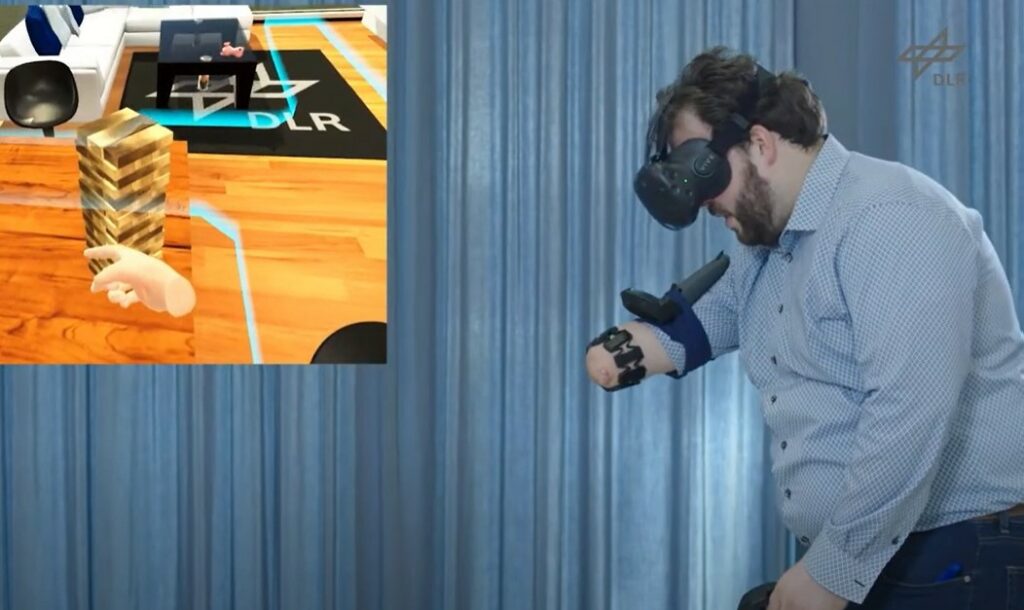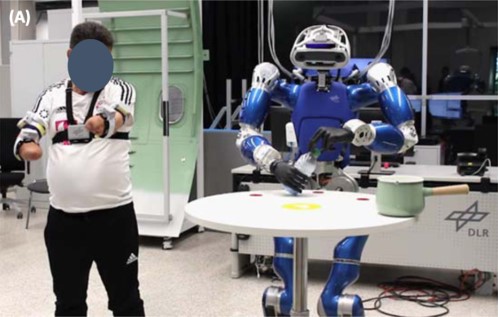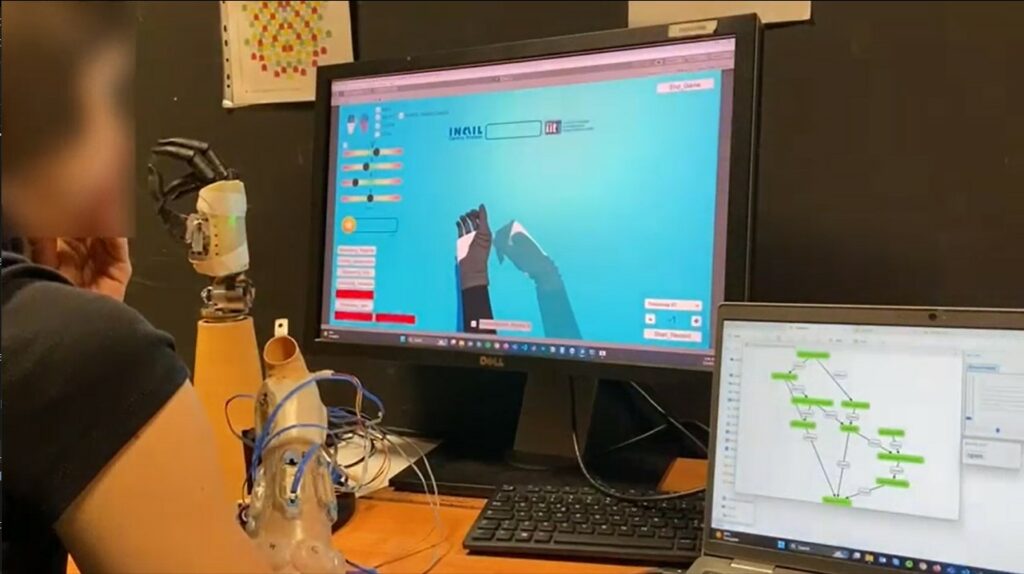Become a Study Participant!
Werde Teil unserer Forschung!
Unser technischer Lehrstuhl forscht aktiv an verschiedenen Themen der assistiven Medizinrobotik, u.a. intelligente Prothesen und Exoskelette für die oberen und unteren Gliedmaßen. Dabei konzentrieren wir uns weniger auf das Bauen von neuer Robotik, sondern viel mehr auf die sogenannte “Intent Detection” (also dt.: Willenserkennung), um die Kontrolle über Prothesen und andere Robotik zu verbessern und vor allem intuitiver zu gestalten. Kurz gesagt, die Kombination von Robotik und KI zur menschlichen Assistenz. Um unsere Forschung zu neuen (und hoffentlich besseren) Algorithmen und Methoden zu testen, führen wir immer wieder sogenannte “User Studies” mit Testpersonen durch. Das kann zum Beispiel so aussehen, dass die Testperson ein Armband mit Sensoren anzieht, welche die Muskelsignale messen können und dann z.B. auf einem Monitor oder in der (Virtuellen) Realität in Echtzeit eine Prothese steuert und versucht verschiedene Aufgaben zu erfüllen.



Sie möchten ein Teil unserer Forschung werden?
Schicken Sie doch einfach eine Mail an airob[at]fau.de !
(english version)
Become part of our research!
Our technical chair actively conducts research on various topics of assistive medical robotics, including intelligent prostheses and exoskeletons for the upper and lower limbs. We focus less on building new robotics and more on so-called “intent detection” in order to improve the control of prostheses and other robotic devices and, above all, to make them more intuitive. In short, the combination of robotics and AI in the context of human assistence. In order to test our research into new (and hopefully better) algorithms and methods, we repeatedly carry out so-called “user studies” with test subjects. For example, the test subject might put on a wristband with sensors that can measure muscle signals and then control a prosthesis in real time on a monitor or in (virtual) reality and attempt to perform various tasks.
Simply send an e-mail to airob[at]fau.de !
[1] M. Connan et al., ‘Learning teleoperation of an assistive humanoid platform by intact and upper-limb disabled users’, in Proceedings of ICNR – International Conference on NeuroRehabilitation (Converging Clinical and Engineering Research on Neurorehabilitation IV), D. Torricelli, M. Akay, and J. L. Pons, Eds., Springer International Publishing, 2021, pp. 165–169. doi: 10.1007/978-3-030-70316-5_27.
